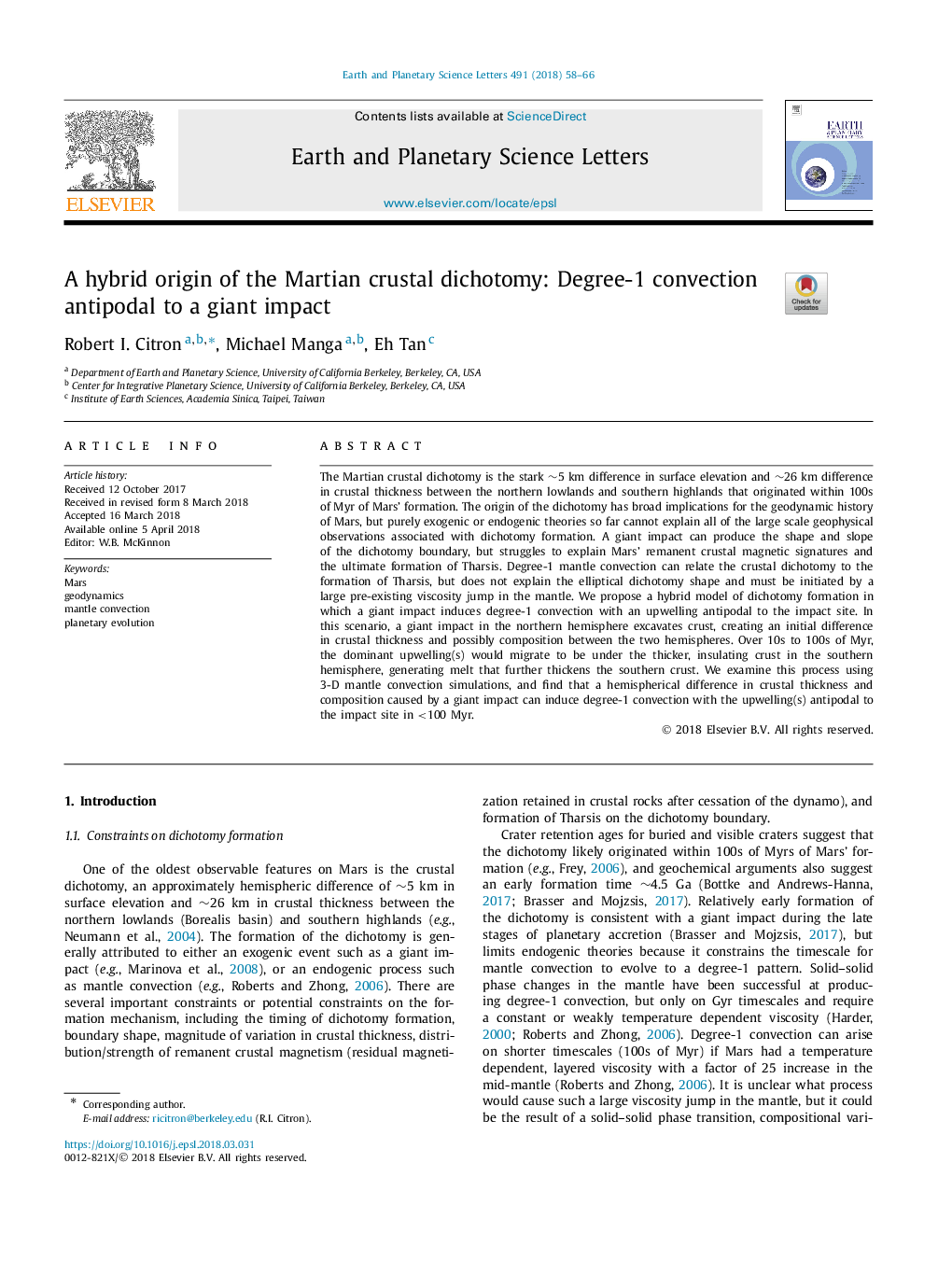| Article ID | Journal | Published Year | Pages | File Type |
|---|---|---|---|---|
| 8906933 | Earth and Planetary Science Letters | 2018 | 9 Pages |
Abstract
The Martian crustal dichotomy is the stark â¼5 km difference in surface elevation and â¼26 km difference in crustal thickness between the northern lowlands and southern highlands that originated within 100s of Myr of Mars' formation. The origin of the dichotomy has broad implications for the geodynamic history of Mars, but purely exogenic or endogenic theories so far cannot explain all of the large scale geophysical observations associated with dichotomy formation. A giant impact can produce the shape and slope of the dichotomy boundary, but struggles to explain Mars' remanent crustal magnetic signatures and the ultimate formation of Tharsis. Degree-1 mantle convection can relate the crustal dichotomy to the formation of Tharsis, but does not explain the elliptical dichotomy shape and must be initiated by a large pre-existing viscosity jump in the mantle. We propose a hybrid model of dichotomy formation in which a giant impact induces degree-1 convection with an upwelling antipodal to the impact site. In this scenario, a giant impact in the northern hemisphere excavates crust, creating an initial difference in crustal thickness and possibly composition between the two hemispheres. Over 10s to 100s of Myr, the dominant upwelling(s) would migrate to be under the thicker, insulating crust in the southern hemisphere, generating melt that further thickens the southern crust. We examine this process using 3-D mantle convection simulations, and find that a hemispherical difference in crustal thickness and composition caused by a giant impact can induce degree-1 convection with the upwelling(s) antipodal to the impact site in <100 Myr.
Related Topics
Physical Sciences and Engineering
Earth and Planetary Sciences
Earth and Planetary Sciences (General)
Authors
Robert I. Citron, Michael Manga, Eh Tan,
